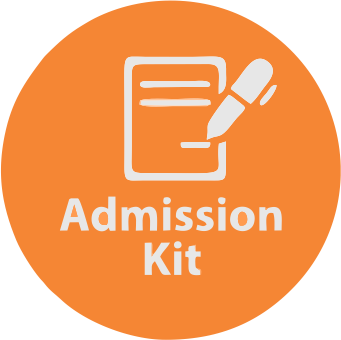Not Offered in Spring 2026
Mission of the proposed programs is to contribute to community by linking the academic excellence with emerging needs of skilled human resource for the country.
Why Degree in BS Remote Sensing and Geographic Information System?
BS in Remote Sensing and Geographic Information System impart more confidence and maturity to the graduates and would prepared them to play a leading role in National and International projects.
This includes special emphasis on:
- GIS Programming
- GIS for Disaster Management
- Spatial Decision Support Systems
- Applications of Remote Sensing and GIS
- Digital Image Processing and Mapping
- Special Topics in GIS
Program Objectives:
- To initiate and develop the undergraduate level of remote sensing and geographic information system at University of Management and Technology.
- To attempt to help develop human resource at the entry level of their career.
- To generate impact quality research in the field of remote sensing to ensure academic service to society.
- To equip the professionals in the field with climate change adaptability and disaster risk management skill set.
- To elevate the remote sensing practice at Pakistan to international standards.
Career Path/Job Opportunities:
A Remote Sensing and GIS (Geographic Information System) expert has a diverse range of job opportunities across various industries and sectors. Remote Sensing involves the collection and interpretation of data from satellites, aerial imagery, and other remote sensing technologies, while GIS involves the analysis, management, and visualization of geographic data. Here are some potential job options for a Remote Sensing and GIS expert:
GIS Analyst/Technician:
Analyzing and interpreting geographic data to create maps, perform spatial analysis, and generate reports for various applications such as urban planning, environmental assessment, natural resource management, and more.
Remote Sensing Specialist:
Using satellite imagery, LiDAR data, and other remote sensing techniques to monitor and analyze environmental changes, agricultural practices, urban growth, disaster response, and more.
Cartographer:
Designing and creating maps for various purposes, including topographic maps, thematic maps, and interactive web maps, using GIS software and cartographic principles.
Geospatial Data Scientist:
Applying advanced data analysis and machine learning techniques to geospatial data to extract insights, patterns, and trends for decision-making in fields like transportation, logistics, and urban planning.
Environmental Consultant:
Assessing and mitigating environmental impacts through the use of GIS and remote sensing data, aiding in environmental impact assessments, land-use planning, and conservation efforts.
Urban Planner:
Using GIS to assist in urban and regional planning, land-use zoning, transportation modeling, and infrastructure development to ensure efficient and sustainable growth. Natural Resource Manager: Monitoring and managing natural resources such as forests, water bodies, and wildlife habitats using GIS and remote sensing tools for conservation and sustainable management.
Disaster Management Specialist:
Using GIS and remote sensing to predict, monitor, and respond to natural disasters and emergencies by analyzing spatial data and facilitating efficient disaster response.
Geospatial Software Developer:
Creating and maintaining GIS software tools, applications, and plugins to enhance data analysis, visualization, and manipulation capabilities. Research Scientist/Academic: Conducting research in universities, research institutions, or private companies, focusing on topics like geospatial analysis, remote sensing technology advancement, and GIS methodology development.
Satellite Image Analyst:
Analyzing satellite and aerial imagery to extract valuable information for industries such as agriculture, forestry, mining, and environmental monitoring.
Geospatial Project Manager:
Leading and coordinating geospatial projects, managing data collection, analysis, and presentation using GIS and remote sensing technologies.
Remote Sensing and GIS Trainer/Instructor:
Educating others through workshops, training programs, and online courses on remote sensing, GIS principles, and related technologies.
Telecom Network Planner: Designing and optimizing the placement of cellular towers and communication infrastructure using GIS and spatial analysis to ensure effective network coverage.
Oil and Gas Exploration:
Assisting in site selection, environmental impact assessment, and resource exploration using remote sensing and GIS data in the energy sector.
